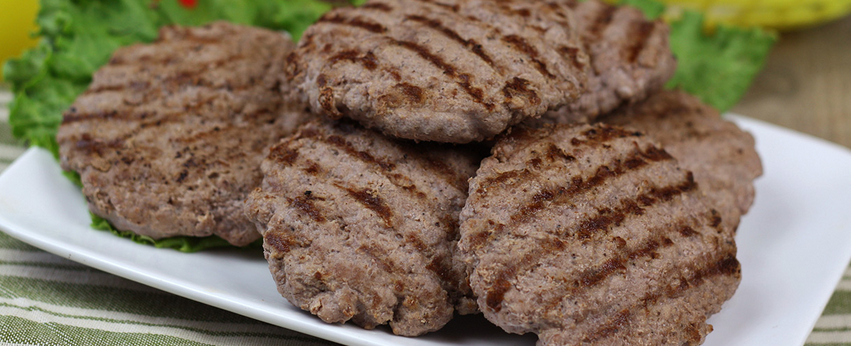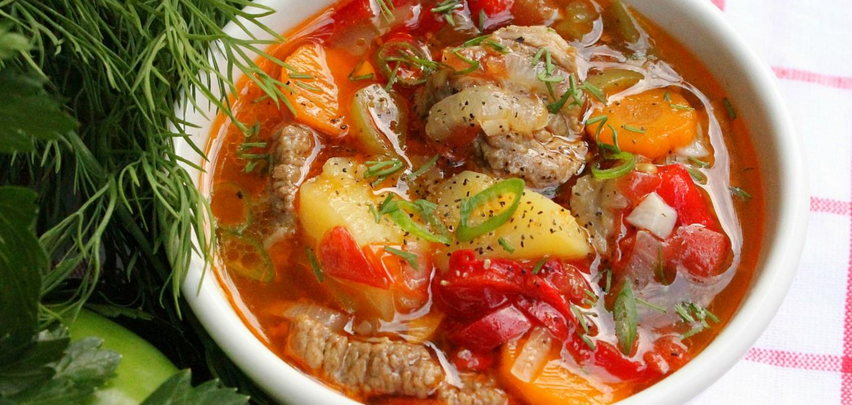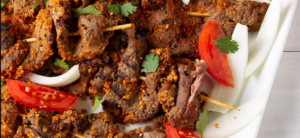From Butcher’s Cut to Culinary Gem: A Guide on How to Cook Beef Heart

When people hear “beef heart,” they usually think of it as something best left to the realm of nose-to-tail purists or survival shows. But from my experience behind both fine-dining lines and home stoves, I can tell you this: beef heart is one of the most flavorful, lean, and surprisingly versatile cuts out there—if you treat it right.
- Choosing and Preparing Beef Heart the Right Way
- Core Ingredients and Seasoning Essentials
- Slow Cooking and Braising for Maximum Tenderness
- Grilling and Searing for a Steak-Like Experience
- Versatile Cooking Methods and Time Guide
- Pairing with First Courses and Elevating to Entrées
- Slow Cooking a Corned Beef Brisket and Why Heart Deserves the Same Patience
- Balancing Bold Flavors with the Richness of Beef Heart
- Leftovers That Get Better the Next Day
- Serving for Special Occasions or Weeknight Comfort
- Why Heart Belongs in Your Regular Rotation
- Making Beef Heart Kid-Friendly (Yes, Really)
- Tips for Buying, Trimming, and Storing Beef Heart
- Mistakes to Avoid with Beef Heart
- Why Cooking Beef Heart Changed My Perspective as a Chef
- FAQ

Choosing and Preparing Beef Heart the Right Way
The first time I cooked beef heart, I’ll admit—I was intimidated. It came out of the butcher paper looking more like a biology lesson than a dinner ingredient. But once you clean it up properly, you’ll see the magic underneath.
You’ll want to trim away all visible fat, sinew, and valves. I slice the heart open like a book, lay it flat, and remove the connective tissue with a sharp boning knife. What’s left is a dense, deep-red muscle that looks like flank steak with character.
Ideally, get your heart from a reputable butcher. Grass-fed hearts have a cleaner flavor, and fresh is always better than frozen for texture. If you’re a fan of hearty, slow-cooked comfort meals like corned beef brisket in the slow cooker, beef heart will feel like a natural next step.
Core Ingredients and Seasoning Essentials
Beef heart has a rich, meaty profile but a mild flavor—it’s not “gamey” or aggressively offal-like. That means your seasonings can go bold or subtle depending on the dish. Here’s what I lean on most often:
- 1 whole beef heart (about 2–3 pounds after trimming)
- Kosher salt and coarse black pepper
- Garlic (fresh or powder)
- Smoked paprika or cumin for depth
- Olive oil or rendered beef fat for searing
- Optional marinade: red wine, balsamic vinegar, rosemary, and Dijon
You can slice it into steaks and marinate, dice it for skewers, or cube it for braising. The heart’s natural structure takes to almost any spice blend—from chimichurri and harissa to Asian soy-ginger glazes. Don’t be afraid to experiment.
Slow Cooking and Braising for Maximum Tenderness
If you’ve ever slow-cooked a tough cut like short ribs or brisket, you already understand what low-and-slow magic does to dense muscle. Beef heart is no exception—it absolutely transforms in the crock pot or Dutch oven.
My go-to slow braise involves searing the trimmed pieces first, then adding them to a pot with caramelized onions, garlic, a splash of red wine, and enough beef broth to cover. Cook on low heat—either in the oven or slow cooker—for 6 to 8 hours until fork-tender. Finish with a spoon of vinegar or lemon juice to brighten the richness.
This method gives you shredded, ultra-flavorful beef that works beautifully in tacos, over polenta, or tucked into a warm pita with greens.

Grilling and Searing for a Steak-Like Experience
When I want beef heart to shine like steak, I slice it into half-inch medallions, marinate it for a few hours in olive oil, garlic, red wine vinegar, and herbs, then throw it on a ripping hot cast iron pan or grill. Just 2–3 minutes per side does the trick—anything longer and it starts to toughen.
What you get is something between flank steak and venison in flavor, with a beautiful chew and a deeply satisfying umami bite. I serve it with a bright chimichurri or sliced over arugula with shaved Parmesan and balsamic reduction.
It’s an ideal intro for skeptics—especially those who love slow cook beef ribs in crock pot and are looking to branch out into less conventional but equally rich cuts.
Versatile Cooking Methods and Time Guide
Here’s a snapshot from my kitchen notebook—an internal chart I’ve built from years of trial, error, and delicious success. Whether you’re searing, braising, or slow-cooking, it’s all about choosing the right method for your meal goal.
| Cooking Method | Temperature | Time | Result & Notes |
| Slow Cooker (Low) | ~200°F / 93°C | 6–8 hours | Tender and shreddable, ideal for tacos, stews, or rice dishes |
| Slow Cooker (High) | ~300°F / 149°C | 3.5–4.5 hours | Still soft, but less juicy; not as forgiving |
| Oven Braise | 300°F / 149°C | 2.5–3.5 hours | Rich, sliceable texture, great for slicing over mash or grits |
| Pan-Seared / Grilled | Medium-High Heat | 2–3 min per side | Best when marinated, served medium-rare to preserve tenderness |
| Sous Vide | 135°F / 57°C | 4–6 hours | Incredibly tender, restaurant-quality, then finished by searing |
| Microwave (Leftovers) | Medium Power | 1–2 minutes | Only for reheating; add sauce or broth to prevent drying out |

Pairing with First Courses and Elevating to Entrées
Beef heart can start a meal or be the star of it. For appetizers, I love slicing seared heart thin and serving it on toasted sourdough with whipped horseradish crème and pickled shallots. It’s got that “wow” factor without being fussy.
As a main dish, it shines when plated like steak: think roasted garlic mashed potatoes, sautéed chard, and a pan reduction. Or, try it Peruvian-style—anticuchos, grilled heart skewers with smoky ají amarillo sauce and roasted corn. That dish alone made three picky eaters into believers at my table.
You can also treat it like a braised stew: fold it into risotto, serve with creamy polenta, or wrap it in a Yorkshire pudding shell for a savory hand pie. Trust me—it’s a cut that rewards creativity.
Slow Cooking a Corned Beef Brisket and Why Heart Deserves the Same Patience
I often get asked why I spend hours cooking something like beef heart when I could just toss a chicken in the oven. My answer? Same reason I slow cook a corned beef brisket—it’s about transformation. You start with something tough, humble, even overlooked—and you turn it into something rich, soulful, and comforting.
Slow cooking a corned beef brisket in a crock pot is a perfect example of this principle. The same approach—low heat, flavorful liquid, and time—works magic on heart. It becomes tender, savory, and far more impressive than its reputation suggests.
Balancing Bold Flavors with the Richness of Beef Heart
Beef heart can take a lot of flavor—it welcomes it, in fact. Unlike liver or kidney, it doesn’t have a metallic or mineral edge. It’s pure muscle, dense and lean, so it needs bold seasoning or sauces to bring out its best.
I’ve paired it with chimichurri, harissa yogurt, mustard cream, and even spicy peanut sauce. One of my favorite pairings is a simple red wine reduction with a hint of orange zest—it cuts the richness and elevates the dish from rustic to refined. Even a bright cabbage slaw or pickled onion can wake it up on the plate.
Think contrast: rich heart, sharp acid, a touch of sweetness, and fresh herbs. That’s your framework.

Leftovers That Get Better the Next Day
If you treat beef heart right, the leftovers will reward you. On day two, I slice it cold and make sandwiches with Dijon, pickles, and rye. Or I dice it and toss it into fried rice with scallions and soy sauce—it holds up beautifully.
One of the best things I’ve made? Beef heart enchiladas with smoked chili sauce. The slow-cooked shreds roll into tortillas like brisket and soak up flavor like a sponge. I’ve also done heart and potato hash for brunch—toss it in a hot pan, crack an egg on top, and let it crisp.
Don’t treat leftovers like afterthoughts. With this cut, they’re opportunities.
Serving for Special Occasions or Weeknight Comfort
I’ve served beef heart in two very different contexts: a weeknight solo dinner over rice with roasted broccoli, and a plated course at a ten-seat chef’s tasting with truffle oil and fennel puree. Both times? It disappeared from the plate.
If you’re cooking for guests, slice it carefully, plate it with care, and add a composed sauce. If it’s just for you on a Wednesday night, cube it, sauté it with garlic and paprika, and pile it onto toast. Either way, you’ll eat well.
It’s one of those ingredients that rises to your level—whether that’s elevated or easy.
Why Heart Belongs in Your Regular Rotation
Heart is humble. It’s affordable. It’s nutritious. And—if you’re willing to give it an honest shot—it’s delicious. This isn’t just organ meat. This is real-deal, protein-packed, sustainable cooking. One beef heart feeds a family for a week. You can roast it, braise it, grill it, or slice it for cold cuts.
Most importantly, it reconnects you to where your food comes from. It reminds you how much of the animal can—and should—be used. As a chef, that matters to me. And once you taste it, I think it’ll matter to you too.
Making Beef Heart Kid-Friendly (Yes, Really)
I’ve cooked for plenty of picky eaters—kids included. And surprisingly, beef heart can absolutely pass the “what-is-this-I-don’t-want-it” test. The key is presentation and seasoning.
One way I do it? Ground beef heart blended into meatballs or burger patties. Mixed with a bit of regular ground beef, garlic, and Parmesan, it’s indistinguishable—but leaner and richer. You can also cube it small, marinate it in BBQ sauce, and skewer it like kebabs. Serve it with sweet potato fries and call it steak-on-a-stick. They’ll eat it. I promise.
Texture-wise, once it’s properly cooked, it’s tender and approachable. No odd chewiness, no “off” taste—just good meat.
Tips for Buying, Trimming, and Storing Beef Heart
You’ll usually find beef heart at a local butcher or specialty meat shop. Some grocery stores carry it frozen in the offal section. Always look for bright, deep red flesh with minimal gristle or white connective tissue.
Once you bring it home, rinse it, open it up, and trim away anything rubbery or white. I use a sharp boning knife and work slowly—it’s a little anatomy, but once you do it once, you’ll be confident forever.
Stored raw, it lasts about 1–2 days in the fridge or 3–4 months in the freezer (vacuum sealed is best). Cooked, it keeps for up to 4 days refrigerated and reheats well if stored with a bit of cooking liquid or sauce.
Mistakes to Avoid with Beef Heart
I’ve made every mistake you can make with this cut. I’ve overcooked it, under-seasoned it, and once left it in a marinade for two days (spoiler: not great). So let me help you avoid the same.
The biggest issue? Overcooking. Treat it like flank steak or brisket: either flash it hot and fast, or go low and slow. Anything in between, and you’ll get rubber. Also, don’t skip trimming. Leaving connective tissue on will make bites unpleasantly chewy.
Another mistake? Playing it too safe. This cut shines when seasoned boldly. Don’t hold back—give it garlic, spice, vinegar, or citrus. It can take it, and it needs it.
Why Cooking Beef Heart Changed My Perspective as a Chef
When I first cooked beef heart, it was out of curiosity. When I kept cooking it, it was out of respect. There’s something humbling about taking a cut most people discard and turning it into something people crave.
It forces you to be a better cook. You learn patience. You learn balance. And you start to see meat not just as steak vs. roast, but as a whole animal full of stories and flavors. Heart is the center of that story, literally and figuratively.
Cooking it isn’t just about saving money or being trendy. It’s about honoring the ingredient. And if you cook it once—with intention and care—I’m willing to bet you’ll want to do it again.
FAQ
Does beef heart taste like liver or other organ meats?
From my own experience, absolutely not. Unlike liver or kidneys, beef heart doesn’t have a metallic or “offal” flavor. It’s a dense, clean muscle with a taste similar to lean steak or flank. If you like beef, you’ll probably like heart.
How do you make beef heart tender?
I’ve tried everything from grilling to slow braising. The secret is either cooking it hot and fast to medium-rare or low and slow until it breaks down. Anything in between tends to get tough. Trust me—I’ve tested this more times than I can count.
Can I marinate beef heart overnight?
I’ve done it both ways. I recommend marinating for no more than 8 to 12 hours. Once, I left it in a red wine marinade for over 24 hours—it came out mushy. A few hours is perfect for flavor without compromising texture.
What’s the best way to clean and trim beef heart?
Based on my own kitchen routine, I split it open like a book, remove all visible fat, connective tissue, and valve remnants with a sharp boning knife. Once trimmed, you’re left with a beautiful, clean slab of meat.
Is beef heart healthy to eat?
Absolutely. It’s one of the leanest cuts of beef, loaded with protein, iron, and essential nutrients. I’ve eaten it post-workout as a recovery protein, and it fills you up without weighing you down.
What’s the texture like when cooked properly?
When grilled properly, it’s like a cross between flank steak and sirloin—meaty, satisfying, and firm without being chewy. Braised, it becomes fall-apart tender. I’ve served both styles and they always surprise first-timers.
Can I cook it in a pressure cooker?
Yes—and I do often. I usually cook it on high pressure for 45 minutes with natural release. It comes out tender and rich, great for tacos, stews, or sandwiches.
What kind of dishes can I use it in?
From my experience, just about anything. I’ve made beef heart kebabs, shredded it into enchiladas, sliced it into steak salads, and even turned it into empanada filling. It’s wildly versatile once you know how to handle it.
Does it smell strange when cooking?
Not at all—if cleaned properly. When I grill or braise it with onions and garlic, the kitchen smells like I’m cooking prime beef. The key is trimming all the membranes and letting it cook in a flavorful base.
Can I serve it cold?
Yes. I’ve chilled grilled beef heart, sliced it thin, and used it in sandwiches, salads, and even charcuterie boards. Just make sure it’s not overcooked initially, or it’ll toughen when chilled.
Should I slice it before or after cooking?
It depends. For grilling or pan-searing, I slice before. For braising or slow cooking, I cook it whole or in large chunks, then slice or shred after. That way, you retain moisture and tenderness.
Is it better fresh or frozen?
I’ve used both. Fresh is ideal, but if frozen and properly thawed, the difference is minimal. Just be sure to pat it dry thoroughly before seasoning or searing.
How long does cooked beef heart keep in the fridge?
On average, 3 to 4 days. I store mine with a bit of the cooking liquid to keep it moist. It also freezes well—I’ve kept some for up to two months with no loss of quality.
Definitely. I’ve blended beef heart with ground chuck for burgers, mixed it into meatballs, and even added it to stew with short ribs. It adds richness without overwhelming the dish.
Definitely. I’ve blended beef heart with ground chuck for burgers, mixed it into meatballs, and even added it to stew with short ribs. It adds richness without overwhelming the dish.
Why don’t more people cook with beef heart?
In my opinion, it’s just unfamiliarity. People think “organ meat” and get squeamish. But I’ve served it to dozens of folks who had no idea what it was—and they cleaned the plate. Once you try it, you’ll understand why chefs respect it.




Post Comment